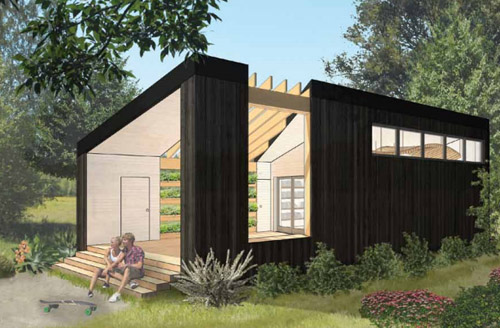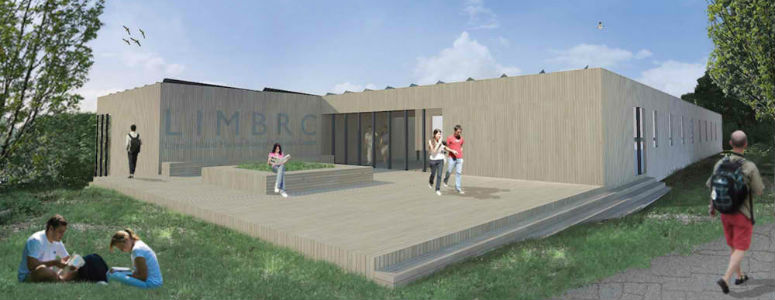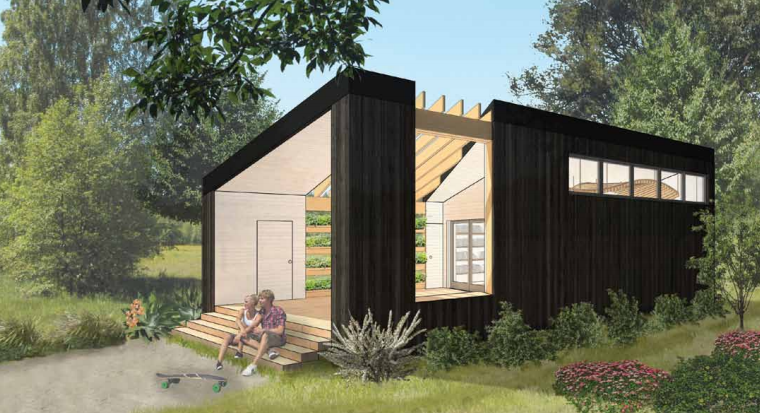What does the future of sustainable architecture look like? Chances are, it’ll include a lot of wood – one of the greenest building materials around – whether used in tiny houses that reduce residents’ impact on the environment or even large-scale skyscrapers. The very first Sustainable Versatility Awards in 2012 asked architecture, engineering and design students to envision a small (600-square-foot) free-standing sustainable structure made of Eastern White Pine. Here are the three winning designs (see 2013’s winners, too!)
In first place (above) is Studio Soleil, imagined as a detached teaching studio and performance space for a piano teacher. Created by Maynard Hayden León of Harvard University Graduate School of Design, this plan uses Eastern White Pine for built-in millwork, including bookshelves lining the main space, and an acoustic baffle system. The exterior features the traditional ‘Shou Sugi Ban’ method of charred wooden siding, which protects against rain, rot and insects for 80 years.
Benjamin J. Greer of Northeastern University won second place with HOME, a modern sustainable house inspired by the traditional Northeast log cabin. Packing lots of comfort and function into the small footprint, it’s got a slatted wood facade that filters light and provides privacy. The interior is smartly laid out to make the most of the space, and there’s even a second-floor terrace.
REST AREA by Natalie Petricca of Carleton University is a striking, artistic pavilion offering an intriguing resting spot for hikers on a forest trail. Eastern White Pine stakes surrounding the sculptural benches mimic the trunks of the adjacent trees, and the seating is inclined to encourage gazing up at the branches.












